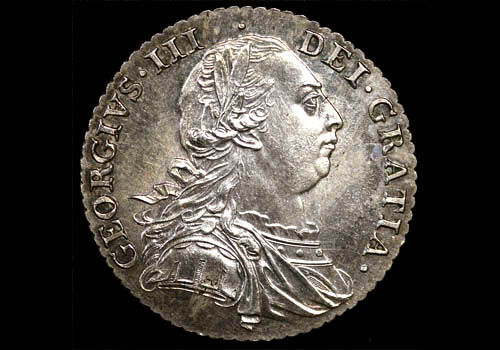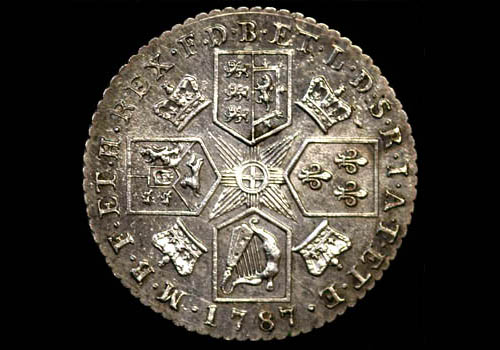King’s Shilling
This large silver coin is the notorious ‘King’s Shilling’ (or ‘Queen’s Shilling’, depending on the monarch). It was a symbol of recruitment in to the British Army at the time of Waterloo.
This one is dated 1787, five years before the start of the war against Republican France. To ‘take the King’s shilling’ meant that you had enlisted in the British Army or the Royal Navy. This was voluntary for the army, although sailors could be impressed, forced into the service after being seized by naval press gangs. You could be captured on shore or taken from a merchant ship.
The sum of a shilling was based on the original daily pay rate for a private soldier. When the man enlisted before a magistrate, the shilling would be returned and the recruit would receive a bounty, varying over time from £2 to £23 17s 6d (about £2,900 in today’s money!).
Many ruses were used to entice men into the regular army, which was made up entirely of volunteers (although there was a county quota system for the militia). Publicans, tricksters and recruiting parties would scour the country to lure men into regiments. One trick was to slip a shilling into a pint of beer, which implied that the civilian had agreed to join. The practice of taking the shilling was officially terminated in 1879. The last shilling of this type was minted in 1798, the next type in 1816.
-
Curatorial info
- Originating Museum: Private collection
- Production Date: 1787
- Material: Silver
-
Use this image
You can download and use the high resolution image for use in a non-profit environment such as a school or college, but please take note of the license type and rights holder information below
- Rights Holder: Private collection.
- License Type: All Rights Reserved
Private Collection
Some objects - such as this one - are owned by private collectors. Waterloo 200 cannot give information on the ownership or location of these items.









